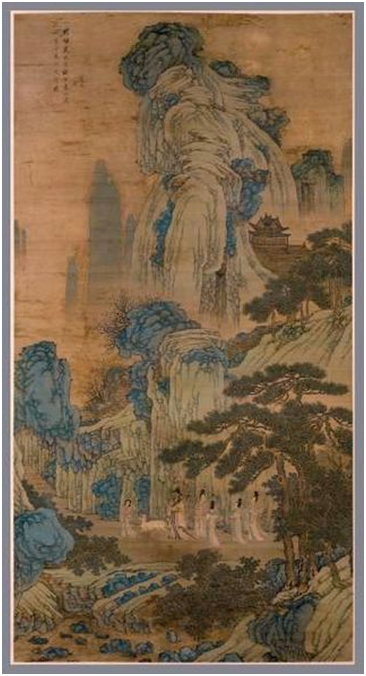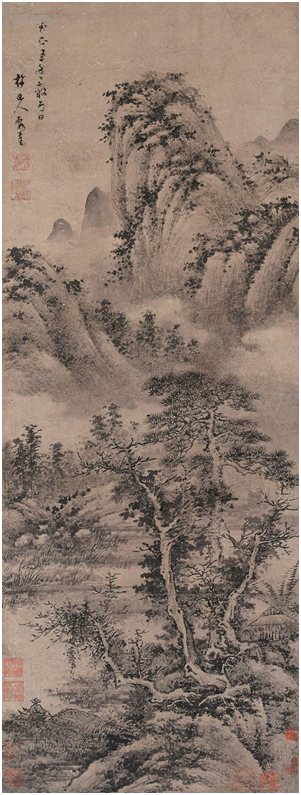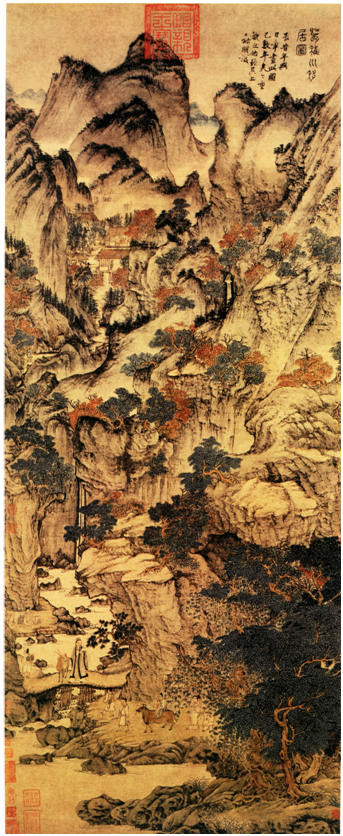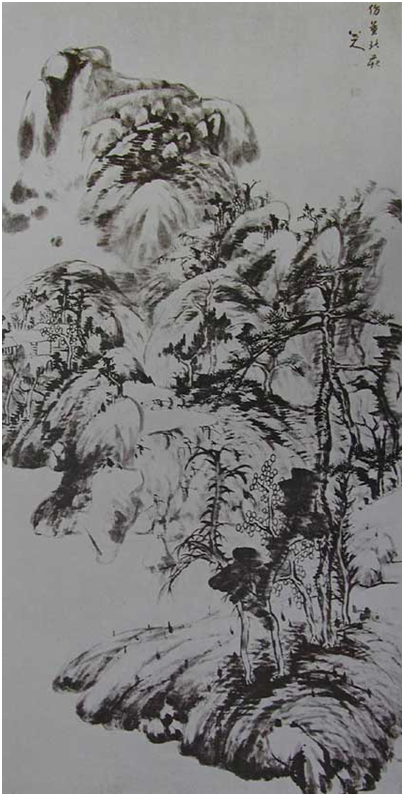沈周的山水画
金灵雅
这是一张很有特色的中国山水画。画里有一座陡峭的山。 山很高但是不宽。 山上有 很多奇特的松树, 还有奇奇怪怪的石头。 半山腰上有一座小楼。 山下有一条小路, 路上走着一位文人, 有四个妇女和一个女孩儿陪着他, 还有一只白鹿走在他们的前面, 好像是在领着他们上山。 这幅画里的颜色比别的传统山水画丰富, 树绿绿的, 怪石蓝蓝的, 妇女的衣服是粉红色的。
沈周是在明朝1427年出生的。因为他家里很富有, 所以他不需要工作。沈周很重视家人和艺术, 所以他爸爸死了以后,他就呆在家里照顾妈妈, 其他时间用来画画。沈周很有名, 他的画不仅在中国, 也在别的国家展出, 比如说美国。
我选这幅画是因为它的颜色跟别的传统画不一样,在很多画中间,一眼就能看到它。 我也喜欢画里面的鹿。鹿象征着动物, 人和自然的融合。 我很喜欢这个思想。
我看这幅画的时候我想像自己是画里的那个女孩儿, 跑在白鹿的前面。我好像感觉到山风吹着我的头发,听见那四个妇女在后面讲话。我会爬上一块怪石, 抬头往上看, 找寻那个半山腰的小楼。 我会一边跟着小鹿走, 一边欣赏大自然的美丽和安静。
Translation:
This is a very unique classical Chinese pastoral painting. In the picture there is a steep mountain that is very tall but not wide. There are lots of unique pine trees and unusual-looking rocks on this mountain, and in the middle there is also a storied Chinese building. Near the base of the mountain there is a small path, and on the path there walks a scholar, who is accompanied by four ladies and a young girl; a white deer also walks in front of them, as if the deer is leading them up the mountain. This painting’s colors are very rich compared to other traditional Chinese pastoral classical paintings: the trees are green, the unusual rocks are blue, and the women’s clothes are pink.
Shen Zhou was born in 1427 in the Ming Dynasty. Because his family was very rich, he did not have to work. Shen Zhou thought that family and art were both very important, so after his father died, he stayed at home to take care of his mother and to paint paintings. Today Shen Zhou is very famous, and his paintings aren’t just in China but are also displayed in other countries such as America.
I chose this painting because its colors are different from any other traditional paintings. One can easily spot it with one glance even in a large collection of similar paintings. I also really like the deer in the painting. The deer represents the painting’s harmony between people, animals, and nature, which is an idea I really like.
When I look at the painting, I imagine that I am the girl in the painting, running in front of the white deer. I can feel the wind blowing my hair and hear the four women speaking. I will climb on top of a rock and raise my head to look for the small storied building. I will then walk beside the small deer and enjoy nature’s beauty and peace.






